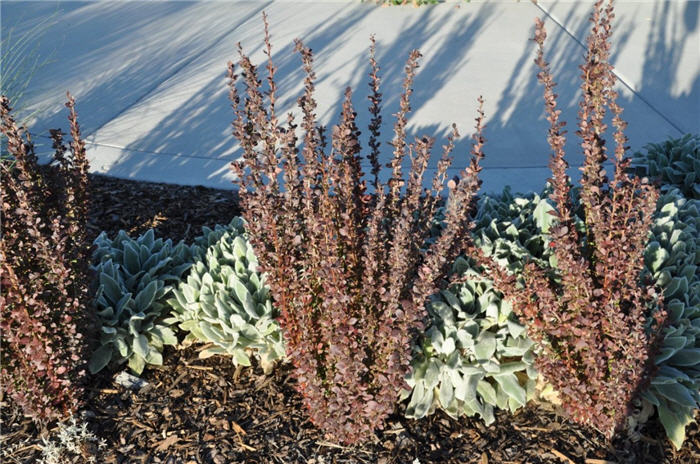| Botanical Name: Berberis thunbergii 'Helmond Pillar' | |
| Common Name: Helmond Pillar Barberry |

-
Anatomy
-
Culture
-
Design
Plant Type
Shrub
Height Range
3-6'
Flower Color
Yellow
Flower Season
Spring
Leaf Color
Purple, Red
Bark Color
Brown, Red
Fruit Color
Red
Fruit Season
Winter, Fall, Persistent
Sun
Full
Water
Medium, Extra in Summer
Growth Rate
Slow
Soil Type
Sandy, Clay, Loam, Rocky, Unparticular
Soil Condition
Average, Rich, Poor, Well-drained, Dry
Soil pH
Neutral, Basic
Adverse Factors
Thorns/Spines
Design Styles
English Cottage, Formal, Japanese, Mediterranean, Ranch
Accenting Features
Fall Color, Unusual Foliage
Seasonal Interest
Winter, Spring, Summer, Fall
Location Uses
Background, Entry, Perennial Border, Shrub Border, Foundation, Walls / Fences
Special Uses
Hedge, Fire Resistant, Small Spaces
Attracts Wildlife
Birds
Information by: Stephanie Duer
Photographer:
Photographer:
-
Description
-
Notes
'Helmond Pillar' is a variety of Japanese barberry, with a narrow, slightly vase-shaped habit growing about 3 to 4 feet tall but only about 12 to 18 inches wide. It has small, bell-shaped yellow spring flowers that are followed by red, torpedo-shaped berries enjoyed by birds. The leaves are burgundy, with a brighter red fall color. Its narrow habit makes it well suited as a hedge or for lining a fence (if you line a walkway, set it back abit or you'll skewer your visitors).
Grow in well drained soil and full sun; will tolerate part shade, though the leaves will lose some color intensity. Tolerates a wide range of soil types, including dry soils; does not tolerate wet soils. See guide for planting instructions. Barberry does not fair well when sheared, but selective pruning in late winter can maintain a nice form and convenient size. See guide for pruning tips.